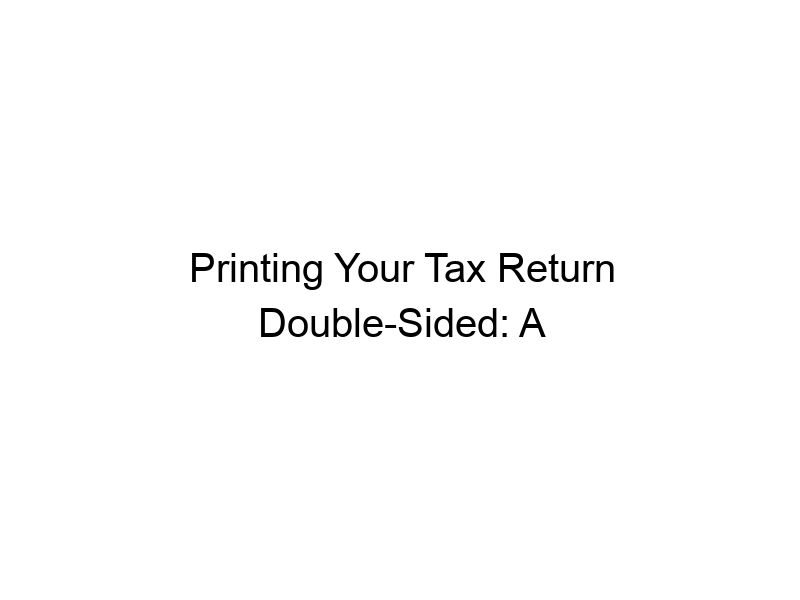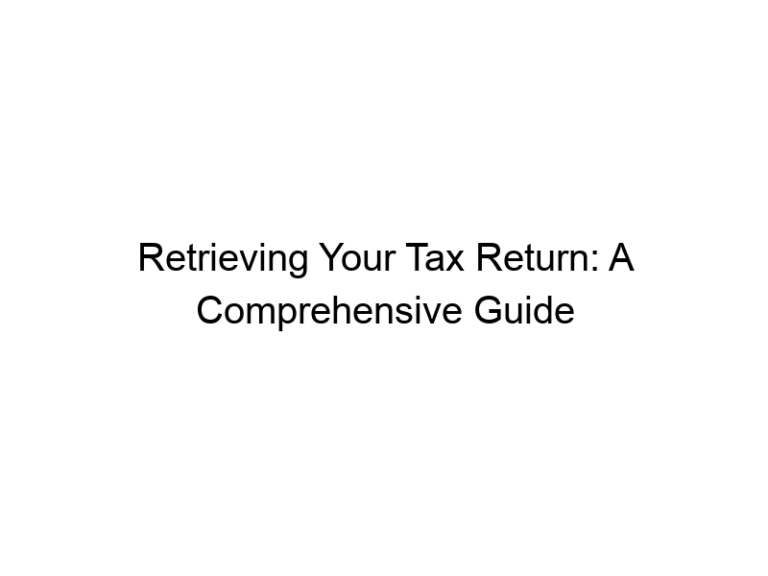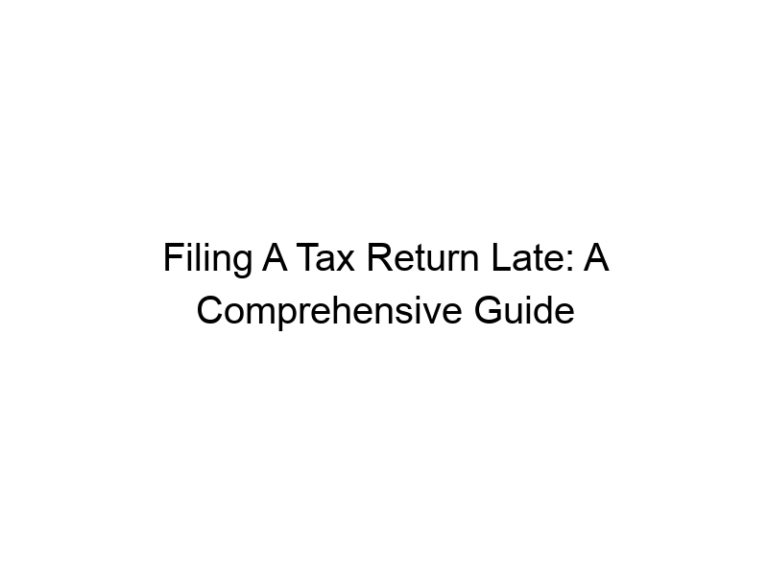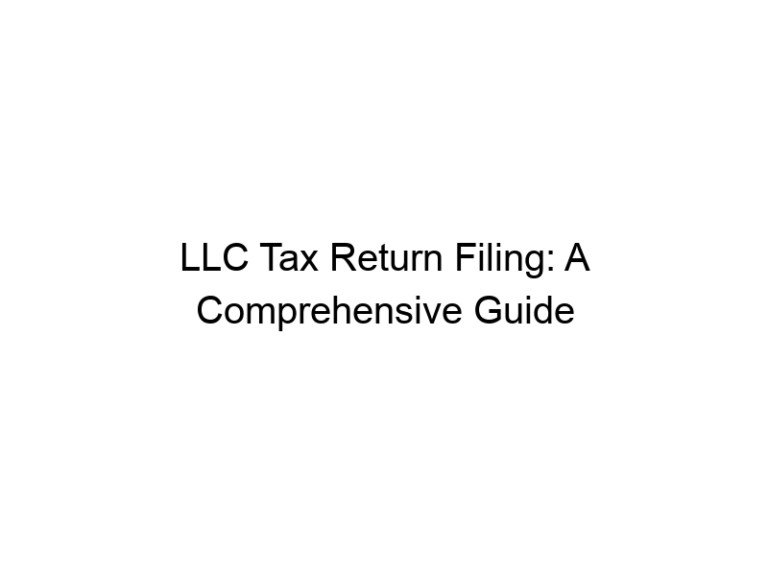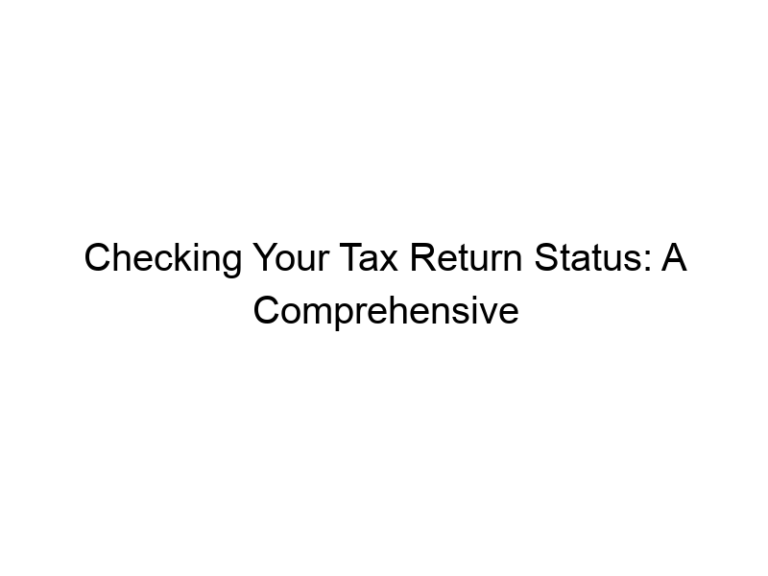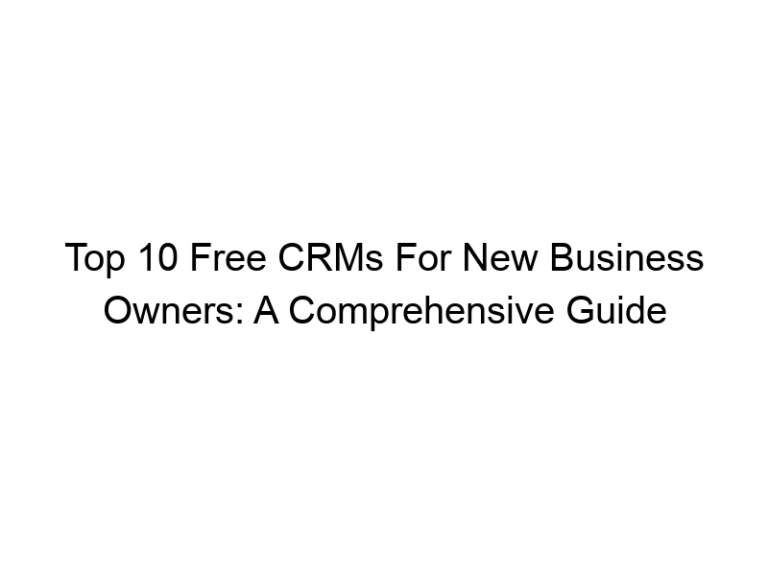Printing Your Tax Return Double-Sided: A Comprehensive Guide
Tax season can be stressful, but minimizing paper waste and maximizing security shouldn’t add to the burden. This guide explores the question: should i print my tax return double side? We’ll delve into the environmental benefits, security implications, and practical considerations of double-sided printing for your tax documents. You’ll learn about the pros and cons, how to do it correctly, and ultimately, make an informed decision for your specific situation.
Double-sided printing, also known as duplex printing, prints on both sides of a sheet of paper. This simple act significantly reduces paper consumption, a crucial factor in environmental responsibility.
Printing your tax return double-sided contributes to environmental sustainability by reducing your paper usage. This helps conserve trees, minimize landfill waste, and decrease your carbon footprint. Beyond the environmental aspects, it also
saves you money on paper and ink costs.
Security Implications of Double-Sided Printing
Protecting Your Sensitive Data
Your tax return contains highly sensitive personal and financial information. Protecting this data from unauthorized access is paramount. Double-sided printing, while environmentally friendly, doesn’t inherently enhance or diminish security. The true security lies in proper disposal and storage of your printed documents.
The Role of Secure Shredding
Regardless of whether you print single-sided or double-sided, secure disposal is crucial. Invest in a good cross-cut shredder to completely destroy your tax documents before discarding them. This prevents identity theft and protects against fraudulent activity.
Data Encryption and Online Security
Before even considering printing, ensure your tax preparation software and online interactions are secure. Look for websites with HTTPS encryption (indicated by a padlock icon in your browser’s address bar). Use strong passwords and avoid using public Wi-Fi for sensitive transactions. Consider a VPN like ProtonVPN or Windscribe for enhanced online security while filing your taxes online.
Practical Considerations for Double-Sided Printing
Choosing the Right Printer
Most modern printers offer double-sided printing capabilities. Check your printer’s manual or settings to ensure it supports this feature. If your printer doesn’t have built-in duplex printing, you can manually flip the pages and print on the other side, but this is more time-consuming.
Software Settings for Duplex Printing
The process of enabling double-sided printing varies depending on your operating system and printer driver. Usually, you’ll find an option in the printer settings dialog box, often labeled “double-sided,” “duplex,” or “two-sided.” Experiment with different settings to find the one that works best with your specific printer model.
Paper Type and Quality
Use high-quality paper designed for both sides printing to prevent ink bleed-through or other printing issues. Thicker paper is generally better suited for double-sided printing, ensuring the ink doesn’t show through to the other side.
Benefits of Double-Sided Printing for Tax Returns
Environmental Friendliness
The most significant benefit is the reduction in paper waste, leading to a smaller environmental impact. Using less paper contributes to sustainable practices and responsible resource management.
Cost Savings
Fewer sheets of paper mean lower costs associated with purchasing paper and ink. This translates to direct financial savings, particularly if you print multiple copies of tax documents.
Reduced Storage Space
Double-sided printing helps to reduce the physical space needed to store your tax documents. This is especially beneficial if you maintain physical archives of your tax returns.
Limitations of Double-Sided Printing for Tax Returns
Possible Ink Bleed-Through
Depending on your paper and ink quality, ink can bleed through to the opposite side, making the text less legible. Using higher-quality paper can mitigate this risk.
Printer Compatibility
Not all printers support double-sided printing. Ensure your printer is compatible before attempting to print double-sided.
Manual Handling for Non-Duplex Printers
If your printer lacks automatic duplex printing, you’ll need to manually flip the pages, which can be tedious and time-consuming, especially for lengthy tax documents.
Comparing Single-Sided vs. Double-Sided Printing
Environmental Impact
Double-sided printing significantly reduces the environmental impact compared to single-sided printing by halving paper consumption.
Cost Comparison
Double-sided printing saves money on paper and ink costs, making it a more economical choice in the long run.
Ease of Use
Double-sided printing is more convenient with automatic duplex printers but can be more cumbersome with manual flipping if your printer doesn’t support duplex printing.
Legibility and Quality
Legibility might be slightly reduced with double-sided printing due to possible ink bleed-through, but high-quality paper usually prevents this issue.
Setting up Double-Sided Printing
Step-by-Step Guide for Windows
Navigate to your printer settings. Select the “Properties” or “Preferences” option. Find the “Paper/Quality” or “Finishing” tab. Choose “Double-sided” or “Duplex” from the available options. Select the binding option (short-edge or long-edge binding). Print your document.
Step-by-Step Guide for macOS
Open the Print dialog box. Click the “Show Details” button. Locate the “Layout” or “Finishing” tab. Select “Double-sided” from the options. Choose your binding preference. Print your document.
Troubleshooting Common Problems
If you encounter issues like misaligned printing or ink bleed-through, adjust the paper type settings in your printer driver. Consider using higher-quality paper designed for double-sided printing. If the problem persists, check your printer’s manual for troubleshooting guides.
Advanced Considerations for Double-Sided Printing
High-Volume Printing
For high-volume printing, ensuring your printer can handle the increased workload is critical. Consider using a more robust printer designed for commercial use if you frequently need to print large quantities of documents.
Printer Maintenance for Duplex Printing
Regular maintenance is essential to keep your printer running smoothly, especially when using duplex printing. Clean the printer rollers and check the ink levels to avoid potential issues like paper jams or blurry prints.
Alternatives to Printing: Digital Storage and E-Filing
Consider storing your tax documents digitally using secure cloud storage services or by e-filing your taxes directly with the relevant tax authorities. This eliminates the need for printing altogether, maximizing both environmental and security benefits.
The Importance of Secure Document Disposal
Shredding vs. Recycling
Simple recycling isn’t enough for sensitive documents like tax returns. Shredding your tax documents is the only way to completely destroy the information and prevent identity theft. Invest in a reliable cross-cut shredder for the best protection.
Secure Deletion of Digital Tax Files
If you store your tax returns digitally, make sure to securely delete the files from your computer and any cloud storage services. Use secure deletion software to completely erase the data and prevent data recovery.
Best Practices for Data Privacy
Always protect your data throughout the entire tax filing process. Use strong passwords, enable two-factor authentication, and be wary of phishing scams. Stay informed about online security best practices to minimize risks.
Choosing the Right VPN for Tax Filing
Top VPN Recommendations for Enhanced Security
Consider using a VPN like ProtonVPN, Windscribe, or TunnelBear while filing your taxes online. These services encrypt your internet traffic, protecting your data from eavesdropping and ensuring secure communication.
VPN Features to Look for
Look for VPNs with strong encryption protocols (like AES-256), a no-logs policy, and a wide server network for optimal speeds and security.
Free vs. Paid VPN Services
Free VPN services often have limitations like slower speeds and lower data caps. For secure tax filing, a paid VPN offers better performance and more reliable security features. Windscribe, for example, offers 10GB of free data monthly, while ProtonVPN and TunnelBear offer free plans with varying limitations.
Frequently Asked Questions
What is the best way to dispose of printed tax returns?
The best way is to shred them using a cross-cut shredder to render the information irretrievable. Never simply recycle them.
Can I use any type of paper for double-sided printing of tax returns?
It’s best to use high-quality paper designed for duplex printing to prevent ink bleed-through and ensure readability. Thicker paper generally works better.
Is double-sided printing always more environmentally friendly?
Yes, assuming the paper is properly recycled afterward. Double-sided printing inherently uses half the paper compared to single-sided printing, reducing the environmental impact.
What if my printer doesn’t have a double-sided printing option?
You can manually flip the pages and print on the other side. However, this is more time-consuming and less efficient than using a printer with automatic duplex capabilities.
Does double-sided printing affect the security of my tax information?
Double-sided printing itself doesn’t inherently affect the security. Security is primarily determined by how you handle and dispose of the printed document. Secure shredding remains crucial.
Can I still e-file my taxes if I print a copy for my records?
Yes, e-filing and printing a hard copy for your records are completely compatible. Many people choose to print a copy for their records even if they electronically file their return.
What are the best practices for securing my online tax data?
Use a secure internet connection (avoid public Wi-Fi), use strong passwords, enable two-factor authentication wherever possible, and be wary of phishing attempts. Consider using a reputable VPN for added security.
Final Thoughts
Printing your tax return double-sided is a responsible choice that balances environmental sustainability and cost savings. While it doesn’t directly enhance the security of your tax information, combining it with proper secure shredding and careful online practices ensures comprehensive protection. Remember, the key is responsible handling of sensitive data, whether printed or digital. Consider the practical aspects, your printer capabilities, and the potential for ink bleed-through. If you’re concerned about security while filing online, a reliable VPN like Windscribe is a worthwhile investment. Prioritize data security and environmental responsibility this tax season! Download Windscribe today and experience the benefits of secure online browsing.

